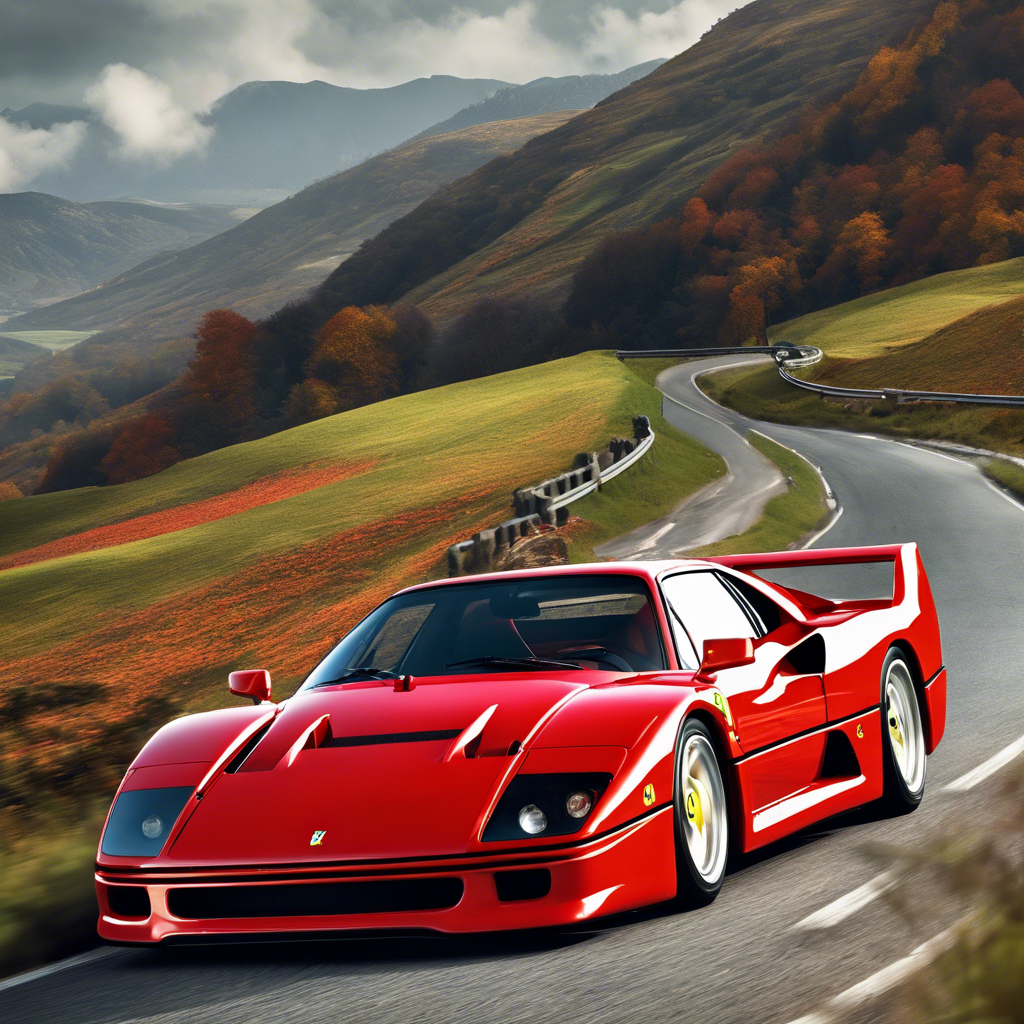The Ferrari F40: A Timeless Icon of Automotive Excellence
December 16, 2022

When we think of automotive legends, few names resonate as profoundly as Ferrari. Among its illustrious roster, one model stands out as a paragon of performance and design: the Ferrari F40. Introduced in 1987 to celebrate the 40th anniversary of the company, the F40 has left an indelible mark not only on Ferrari’s storied history but also on the entire automotive landscape. This article will delve into the F40’s design, engineering, cultural significance, and lasting legacy in the automotive world.
Historical Context and Development

The inception of the Ferrari F40 can be traced back to the visionary leadership of Enzo Ferrari, the company’s founder. Following the success of the Ferrari 288 GTO—a supercar that set the stage for the performance benchmarks of the 1980s—the demand for a lightweight, high-performance vehicle was evident. Enzo’s ambition was to create a car that embodied the very essence of Ferrari: speed, power, and precision.
Under the engineering prowess of Nicola Materazzi and the design direction of Pininfarina, the F40 was born. Production commenced in 1987, with 1,315 units manufactured by the time production ended in 1992. This limited run was pivotal in cementing the F40’s status as a collector’s item and a symbol of ultimate automotive performance.
Design Philosophy
The Ferrari F40 boasts a design that is both functional and striking. At its core, the F40 exemplifies the philosophy of “form follows function.” Its aerodynamic silhouette, characterized by sharp lines and a pronounced rear wing, was meticulously crafted to maximize downforce and reduce drag. Such engineering considerations were not merely aesthetic; they were essential for achieving the F40’s blistering performance.
The body of the F40 is composed of lightweight materials such as composite plastic and carbon fiber, reducing overall weight to approximately 1,100 kg (2,425 lbs). This deliberate emphasis on weight reduction allows the car to achieve an astonishing power-to-weight ratio. The distinct pop-up headlights and extensive use of vents and scoops further enhance its aggressive stance, encapsulating the spirit of a race-ready machine.
Performance and Engineering
At the heart of the F40 lies a 2.9-liter twin-turbocharged V8 engine, generating an impressive 478 horsepower. This formidable power enables the car to accelerate from 0 to 60 mph in just 3.8 seconds, with a top speed of around 201 mph (323 km/h). The F40’s acceleration is visceral, with the twin-turbo system providing a dramatic surge of power that catapults drivers forward, firmly establishing it as one of the fastest cars of its era.
The performance capabilities of the F40 are complemented by its finely tuned chassis and suspension system. Sharing a chassis with Ferrari’s racing prototypes, the F40’s suspension features double wishbones both at the front and rear, ensuring superior handling and stability during high-speed maneuvers. Coupled with a 5-speed manual transmission, the F40 invites a driver engagement that is often lacking in modern supercars.
Cultural Significance
The Ferrari F40 transcends mere automotive engineering; it is a cultural icon that has left a lasting impact on popular culture. Featured prominently in films, video games, and automotive media, the F40 is synonymous with the exuberance of the late 1980s and early 1990s. It has graced the silver screen in movies such as “Die Hard” and “The Wedding Singer,” capturing the imagination of audiences and enthusiasts alike.
Beyond its cinematic appearances, the F40 has become a staple at car shows, auctions, and racetracks, often hailed as a benchmark against which other supercars are measured. Its distinctive design and raw performance evoke nostalgia for a time when driving was about connection and engagement—qualities that some contemporary supercars often overlook in favor of advanced technology and automation.
Legacy and Collectibility
In the world of collectible cars, the Ferrari F40 stands as a testament to exceptional craftsmanship and engineering. Its limited production run, coupled with its status as one of the last Ferraris approved by Enzo himself, has cultivated a fervent following among collectors. As a result, prices for well-preserved F40s have skyrocketed in the collector car market, with values often exceeding $1 million at auctions.
Moreover, the F40’s reputation as a driver’s car has solidified its status as a desirable vehicle among enthusiasts. It offers a raw driving experience that few modern vehicles can replicate, fostering a sense of connection between the driver and the road. Many owners revel in taking their F40s out for spirited drives, reminding us that the joy of driving should never be forgotten.
Conclusion
The Ferrari F40 is not merely a car; it is an experience, an icon, and a tribute to automotive artistry. Its blend of breathtaking design, groundbreaking performance, and cultural significance ensures its place in the pantheon of automotive history. As we navigate advancements in technology and design in the automotive industry, the F40 will forever remain a reminder of what it means to build a supercar that captivates the senses and ignites the passion for driving.
In the end, the Ferrari F40 is a legacy—a symbol of what Ferrari has achieved and what it will continue to strive for in the future. For enthusiasts, collectors, and casual observers alike, the F40 is a story worth telling, a machine worth admiring, and a dream worth pursuing.